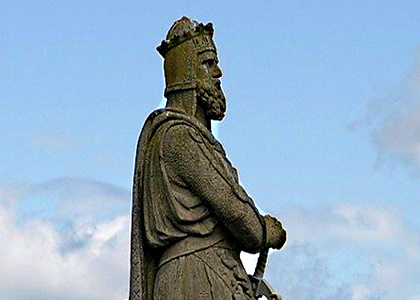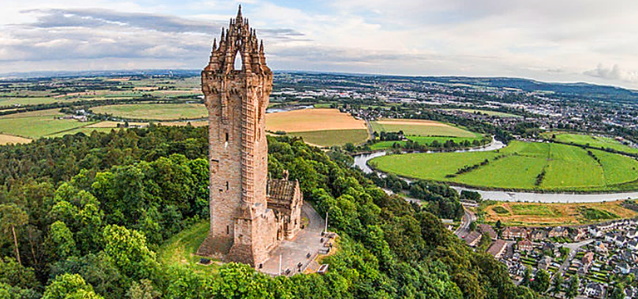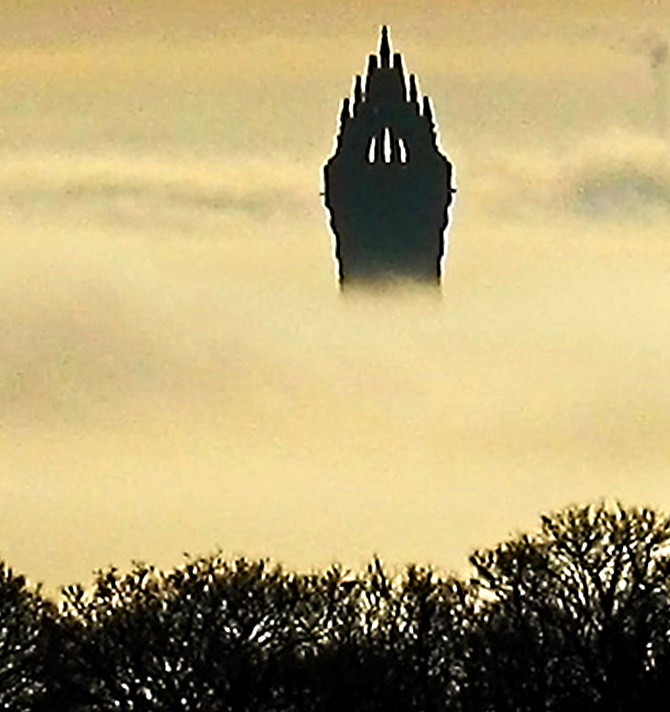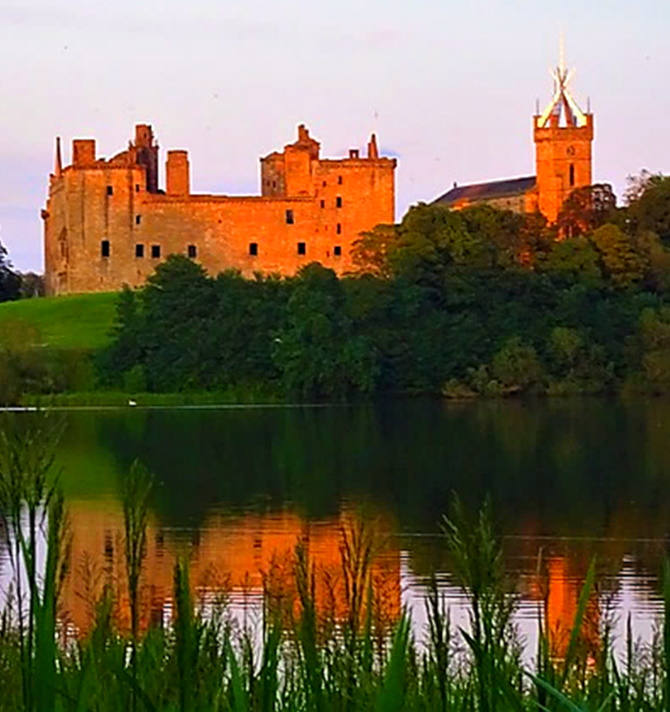Historically Stirling marked the start of the ‘Highland Line’ to the north. It sits in the valley of the river Forth at the last crossing-point, a low-lying piece of land surrounded by hills and rocky outcrops. It’s often referred to as the ‘gateway to the Highlands’ and in many respects it was. This gave it a problem though. It became strategic to control Stirling with the consequence that it became something of a battlefield through the ages
Today its a modern city that retains its character and has also developed a university
Stirling is only about 45 mins from either Edinburgh or Glasgow on a motorway, and about 20 mins from Gleneagles. It’s an easy day-trip from any.
Despite being surrounded by hills, the city itself is flat for being in the floodplain of the ‘Forth’ apart from the rock on which the castle sits and the escarpment of the Wallace Monument. There is a good separation between road and bridleway with quite a lot of ‘green areas’. If the weather has smiled on you, and you’re sufficiently fit and motivated to try it, you could always choose to hire a bike for the day and cycle around?


Stirling Castle.
Stirling castle sits atop a steep crag overlooking the valley below. The castle, was the stronghold of the once mighty Stuart dynasty, and is probably Scotland’s most significant and storied citadel. Most of the principal buildings of the castle date from the fifteenth and sixteenth centuries. A few structures of the fourteenth century remain, while the outer defences fronting the town date from the early eighteenth century. Several Scottish Kings and Queens have been crowned at Stirling, including Mary, Queen of Scots, in 1542. There have been at least eight sieges of Stirling Castle, most notably during the Wars of Scottish Independence, when the castle changed hands several times. The last however was in 1746, when Bonnie Prince Charlie unsuccessfully tried to take the Stirling on his route south to claim the English crown
Under the leadership of Robert Bruce (‘the Bruce’) an outnumbered Scottish army defeated the English at Bannockburn. The Scots then rushed upon the English who struggled back over the Bannock Burn. ‘Bruce’ had the benefit of preparing his defences in advance, and had used his time well. He dug pits and lined them with wooden stakes to impale horses. This meant he was able to direct the English cavalry into a murderous hail of arrows. The second English cavalry force commanded by Robert Clifford then advanced on the flank of the Scots, trying to surround them. They came up against a well drilled schiltron (resembles a giant hedgehog). A wall of spears in a tight formation proved insurmountable for the English cavalry and they camped the night demoralised on the other bank of the Bannock Burn. The river channel would be used to protect their flank and rear, but the events of the following day turned it into a death-trap (try swimming in armour)


Bannockburn isn’t the only battle fought here. Stirling Bridge (1297) lies a mile further north. It was here that another out-numbered, and badly equipped rebel army led jointly by Andrew Moray and William Wallace, (Braveheart), defeated the English. The Scots allowed a critical mass of English cavalry and archers to cross the bridge before attacking. This split the superior English numbers in half. Hemmed in by a bridge, the advantage of numbers and manoeuvrability of cavalry was lost. There were no charges of tartan clad Australians shouting “freedom” we’re afraid.
The Wallace Monument sits on its own crag today and dominates the skyline. You can visit and view what is alleged to be Wallace’s giant sword. Wallace’s triumph was short-lived.
Halfway between Edinburgh and Stirling, and literally just off the main motorway is Linlithgow Palace. This impressive retreat was an ideal place for royals to break the journey between Edinburgh Castle and Stirling Castle. High towers look out over lush greenery and a loch below. The magnificent ruins are the birthplace of Mary Queen of Scots. Linlithgow was added to over two centuries by Stewart Kings and became something of a pleasure palace where the royal households would practise falconry, archery and anything else they chose to indulge
